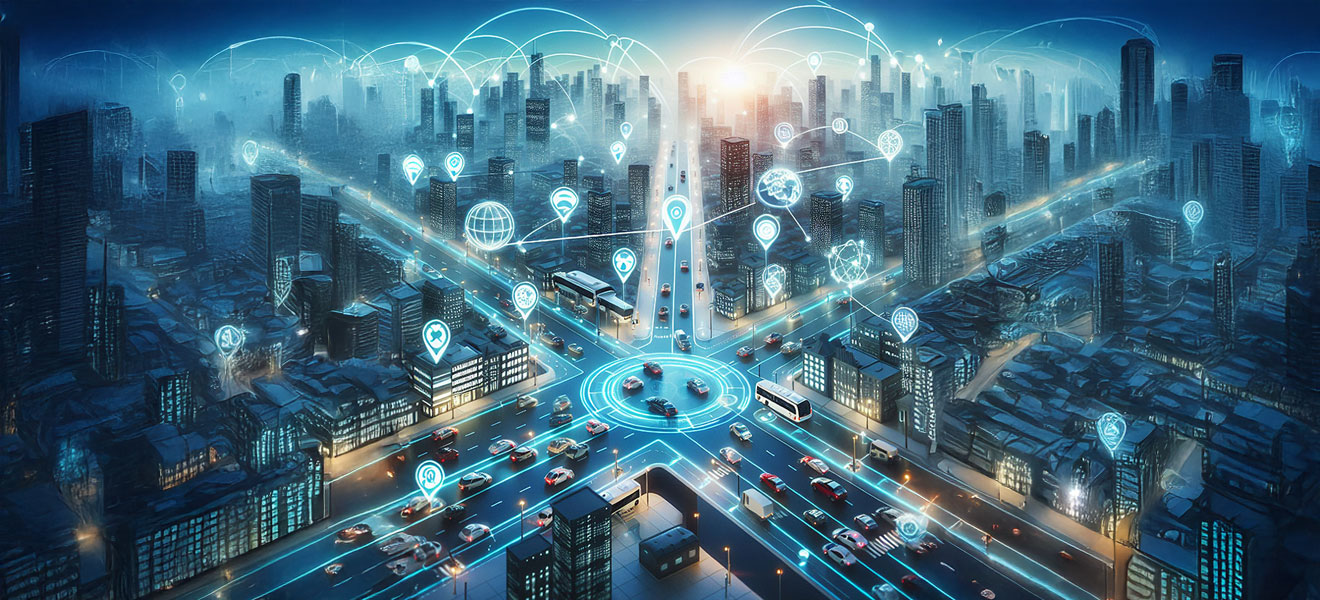
Road traffic accidents claim over a million lives globally each year, while transportation remains one of the largest sources of greenhouse gas emissions. How can we reduce road traffic deaths and injuries while also curbing the effects of climate change? Advances in AI, electric vehicles, and autonomous driving sensor technologies are converging to offer a promising solution: robotaxis. These self-driving taxis aren’t just a technological milestone — they represent a shift toward safer, cleaner, and more accessible urban mobility.
Nearly 1.2 million people died in traffic accidents in 2021, according to WHO’s Global status report on road safety 2023. That’s more than 3,000 lives lost every day, and most of them in urban areas. By contrast, 350 deaths resulted from plane crashes and 4,000 from rail accidents in the same year, based on Road safety and traffic accidents: global statistics. Such a huge disparity leads to the projected economic cost of road injuries: US$1.8 trillion between 2015 and 2030.
Despite this toll, road safety receives far less investment and policy focus than other global threats. In 2021, terrorism caused 7,142 deaths globally, according to Global Terrorism Index 2022. Yet the U.S. allocated $400 billion annually to counterterrorism (Watson Institute’s Costs of War Project), while road safety programs received only $5 billion over five years.
This imbalance reveals a troubling truth: the most persistent danger in our cities is often the least prioritized. Fortunately, emerging technologies - from autonomous vehicles, smart infrastructure, to intelligent transportation systems - are paving the way for safer streets. Among them, robotaxis, shared fleets of self-driving electric taxis, hold unique promise to both reduce accidents and build more sustainable, accessible urban mobility systems.
A robotaxi is an autonomous, driverless, and electric vehicle providing ride-hailing and ride-sharing services. Instead of being operated by a human driver, a robotaxi is powered by a built-in AI system, and guided by advanced sensors such as cameras, LiDAR, RADAR, and navigation components to deliver safe and efficient on-demand transportation.
These self-driving taxis rely on pre-trained AI models and machine learning algorithms, combined with real-time sensor data, to perceive their environments, anticipate risks, and make optimized driving decisions. This enables them not merely to respond to emergencies but also to reduce human error.
According to Precedence Research, the global robotaxi market is expected to grow at an average annual return of over 52% over the next decade, rising from USD 4.43 billion in 2025 to USD 188.91 billion by 2034. The robotaxi market is gaining significant popularity in urban areas, where AI technologies have been increasingly adopted to achieve goals of establishing smart cities and intelligent traffic management. Additionally, benefits of energy-efficiency and sustainable mobility are also the driving forces for the market growth. Characteristics of robotaxi services such as electric vehicles, ridesharing for efficient resource allocation, predictable maintenance updates, and optimal route planning all align with clean energy goals.
Companies like Waymo, Zoox, Tesla, MOIA, Hyandai, Baidu, and Didi have increased investment in developing and deploying robotaxi services, and more competitors are racing to gain a foothold in this fast-growing market.
Despite cutting-edge AI and sensor technologies, robotaxis still need clear, universal guidelines and standards before they can be widely launched on public roads. Widespread adoption also requires time and extensive real-world testing to prove their reliability in critical areas such as obstacle detection, positioning accuracy and route planning precision.
Different approaches also highlight the challenges, Tesla’s camera-based system is praised for being cost-effective but can face limitations in poor visibility. By contrast, Waymo’s sensor fusion — combining LiDAR, cameras, radar, and advanced AI algorithms — is designed to deliver greater accuracy and reliability even in difficult conditions such as heavy rain or low light.
To gain an edge in the fast-growing robotaxi market, it is essential to deploy durable, high-performance hardware systems that seamlessly integrate sensors and AI models while delivering real-time graphics-intensive AI inference for split-second decision-making. With over a decade’s expertise in in-vehicle and edge AI computing platforms, and hands-on insights gained from close collaboration with partners and customers, SINTRONES provides a series of rugged, AI-driven computing systems tailored for intelligent vehicles and autonomous driving applications.
Intel® and NVIDIA® processors for real-time graphics handling and edge AI inference to perform object tracking, dynamic positioning, and advanced visualization for deeper insights
DDR5 memory and SSD storage capacities for storing and updating high-precision map data
PoE and high-bandwidth Ethernets for seamless data integration
E-Mark for automotive vehicles
GMSL-2 technology for ADAS and automotive camera applications
Vibration and shock resistant, compliant with EN 50155, EN 45545-2 (R25), MIL-STD-810H, and equipped with durable M12/M8 connectorsGMSL-2 technology for ADAS and automotive camera applications
Fanless thermal solution for multi-chip (CPU+GPU) system to ensure reliable operation in fluctuating temperatures (-40°C ~ 70°C) and product longevity (Taiwan patent No.: M565941/German patent No.: DE202019102661U1)
Built-in backup battery unit (BBU) to ensure data integrity during unstable power supply (Taiwan patent No.: M447854/German patent No.: DE202019102659U1/China patent No.: CN203178901U)
Smart power management to avoid potential risk of downtime or damages during system boot process
As the robotaxi industry continues to evolve, advancing autonomous mobility requires collaboration across hardware, software, and policy. With its proven reliability and advanced computing power, SINTRONES is committed to powering the future of autonomous transportation.